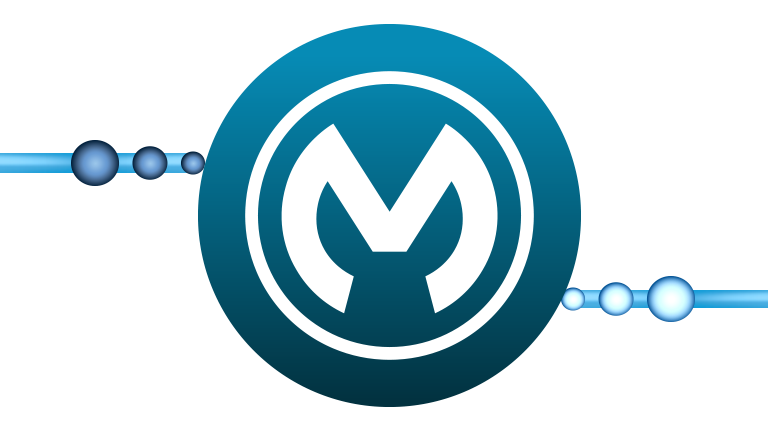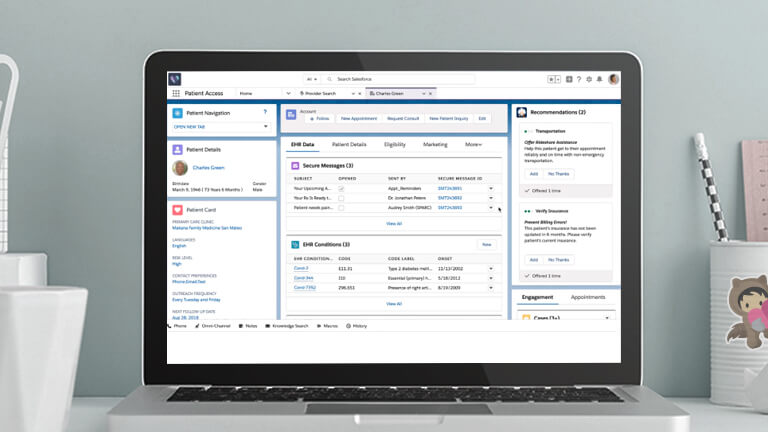Chapter 2: Salesforce’s Approach to Integrated Solutions
Discover how you can set up open, collaborative exchanges.

At Salesforce, we know an open, collaborative exchange of data is achievable. Our suite of solutions was designed to not only integrate, but to meet your increasing demands for interoperability. In applying these capabilities using the Salesforce family of products, we have a methodology that works to get the right data in the hands of the right people at the right time. With this, finding the right integration solution that puts you on the patient to interoperability can be broken down into four discovery steps:
- What’s the use case?
Understand the business context and assess your data, systems, direction, and timing. - What type of integration is needed?
Identify the integration layers across security, data, process, and application. - What’s the integration pathway?
Select your integration approach. Will it be API-led? Where will you host your integrations? What kind of monitoring and run-time capabilities are necessary? - Should you do it alone or engage a partner?
Assess your resources and make a decision between build and buy.
No matter what answers are best for your organization, Salesforce enables you with integration capabilities to help you establish a pathway that leads to frictionless connected experiences. This includes multi-layer integration capabilities, data models, open APIs, integration orchestration, and, of course, intra-Salesforce integrations — all on top of a secure, compliant platform.

For anyone in healthcare, Health Cloud provides the most complete view of the patient, member, or customer because it has been built with an eye to interoperability. As a result, it enables users to access critical clinical and nonclinical patient information across legacy systems.
Using the capabilities identified above, interoperability between Health Cloud and external systems can be achieved at the back-end database level and user interface (UI) level. At the back-end level it would mean that data from an external system would be copied into Health Cloud. At the UI-only level the data would be presented in Health Cloud UI by pulling it in real time from the external system, also known as data virtualization. But it would never be stored in the back end.
For many, the most pressing need is to unlock real-time EHR data. The MuleSoft Anypoint Platform offers an elegant integration solution for Health Cloud, connecting any data, device, or application across both clinical and nonclinical IT systems. Combined with our new out-of-the-box Accelerator for Healthcare, developers have access to customer-validated, prebuilt APIs and integration templates to quickly and easily complete critical digital health IT. This includes integrating real-time Patient 360 data into Health Cloud, building FHIR APIs required by the new CMS and ONC interoperability rules, and more.
At the same time, we recognize that simply providing an API, template, or connector isn’t sufficient to advancing your integration — or interoperability — aspirations. Our drive toward end-to-end integrations starts with defining and understanding the use case, then using it to inform how we prioritize development through a multistep process:
- Define the use case;
- As needed, extend data models with fields necessary to accommodate the use case;
- Where feasible, ensure fields’ definition align to the standard;
- Create orchestrations from the destination system data model to the source system;
- Design and build the end-to-end integrations.
End-to-end integrations will come over time. As business needs evolve, look for opportunities to enhance existing integration — that is, by streamlining orchestration or by building composite APIs — in order to ease the integration burden.
By fitting together APIs, templates, and connectors, we can better forge your integration pathway. Comprehensive integration solutions like those offered by MuleSoft enable integration through a variety of exchange types. While each integration is unique, there are common patterns that can help solve for your integration needs. Below, each pattern describes the design and approach for a particular scenario rather than a specific implementation.
Pattern
Scenario
Remote Process Invocation — Request and Reply
Remote Process Invocation — Fire and Forget
Batch Data Synchronization
Remote Call-In
UI Update Based on Data Changes
Data Virtualization
Chapter 3: Leveraging APIs to Drive Interoperable Systems
See how to:
- Set up integration for interoperability
- Synchronize care in all segments
- Use APIs to drive innovation securely
- Extend MuleSoft to work with new rules













